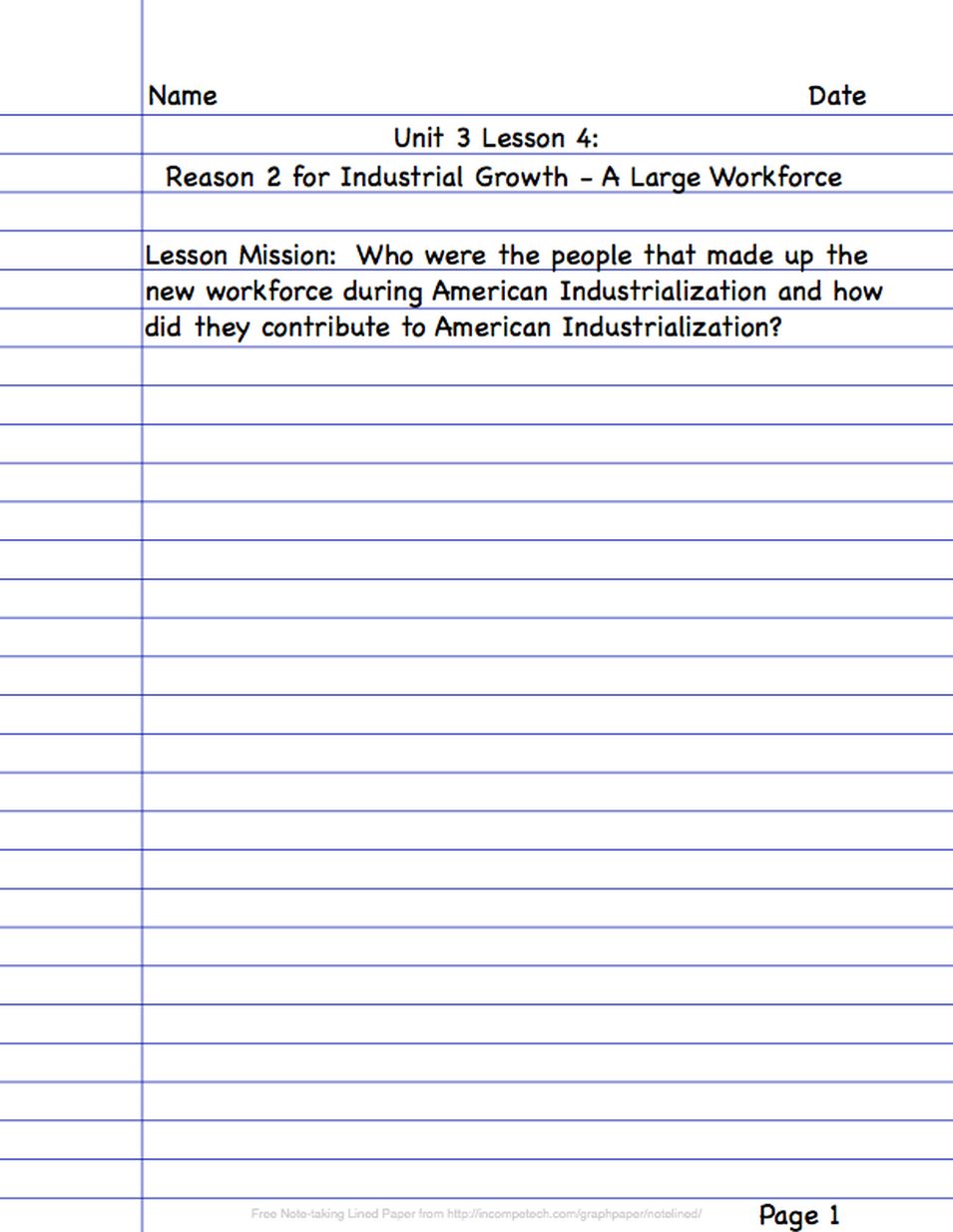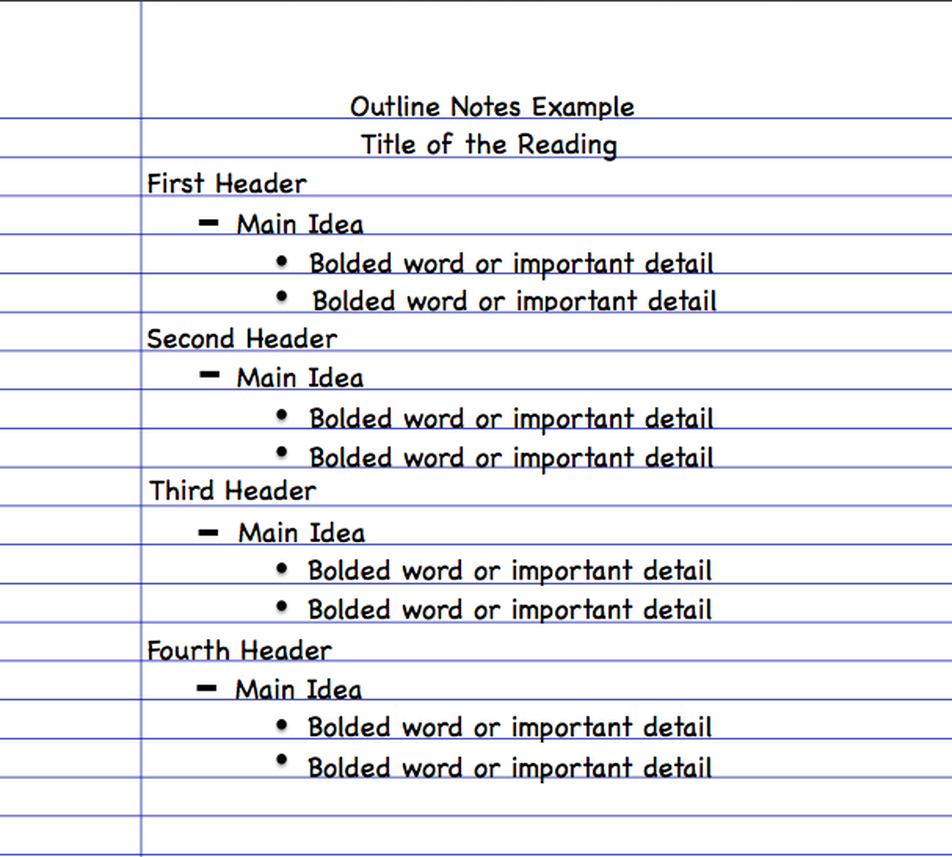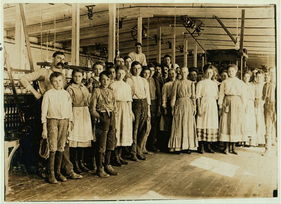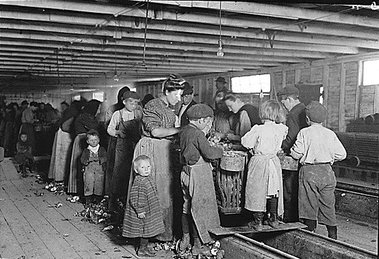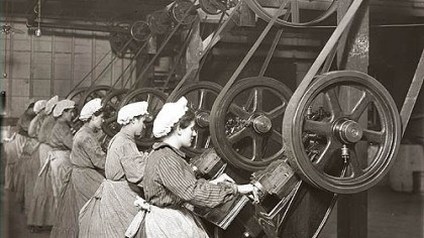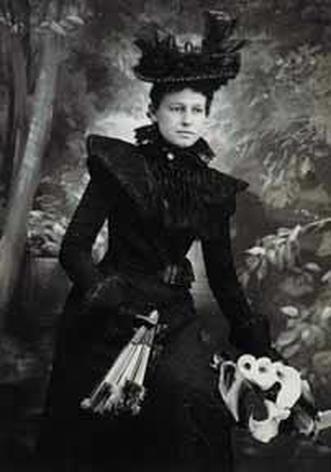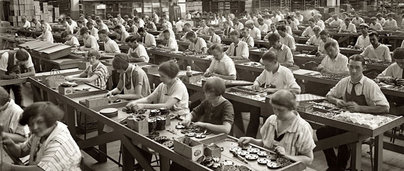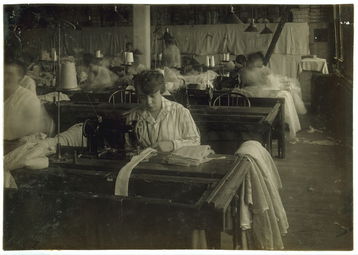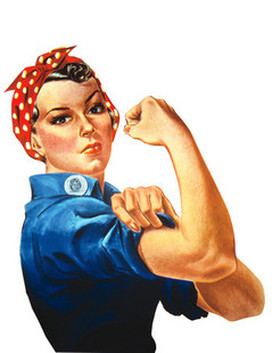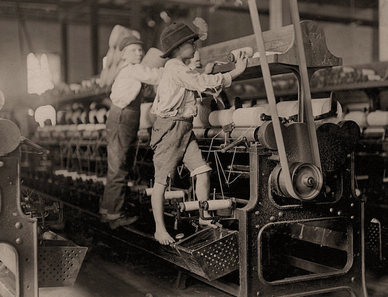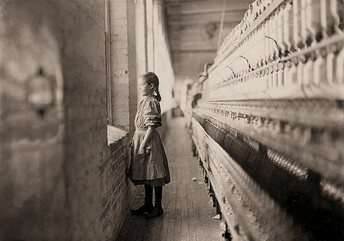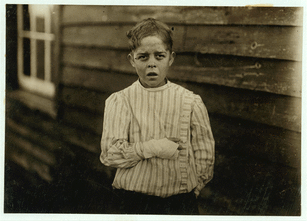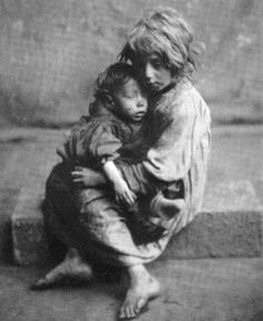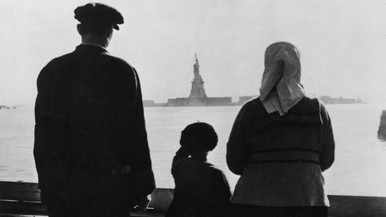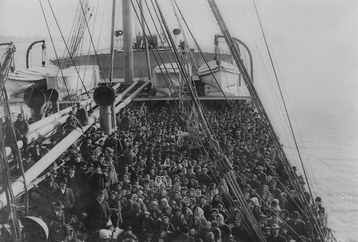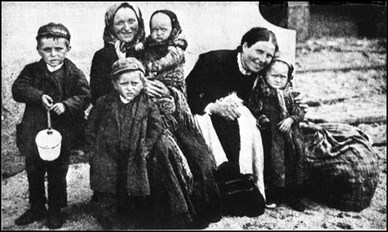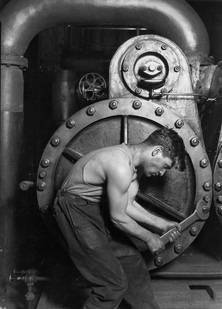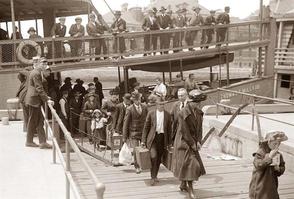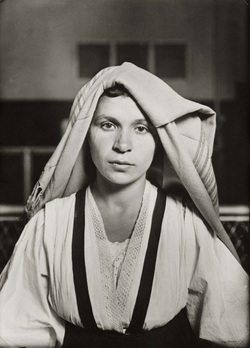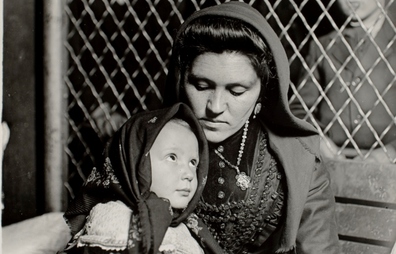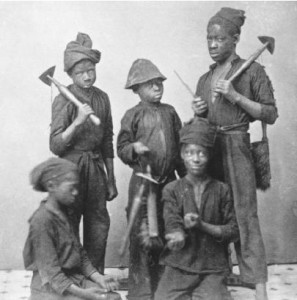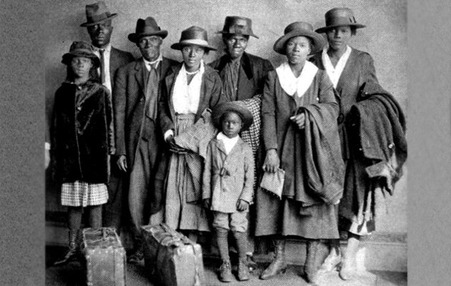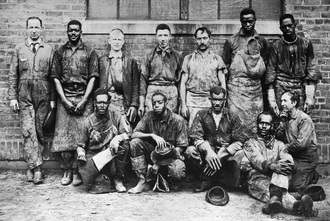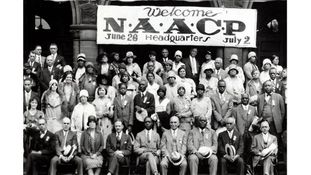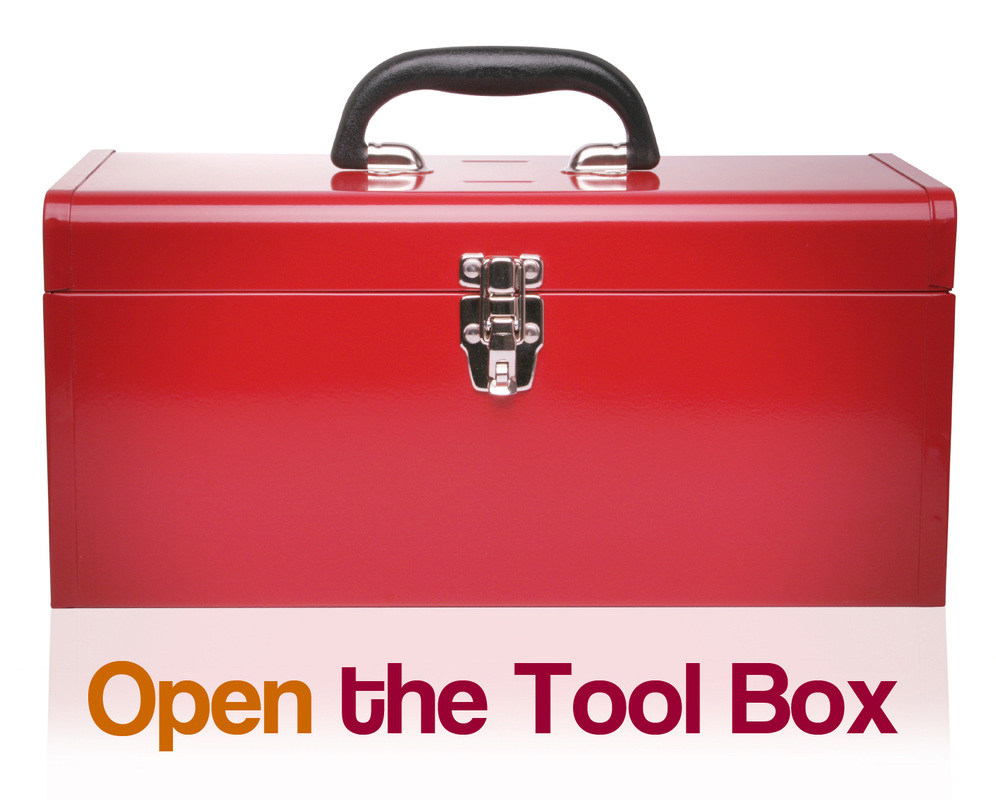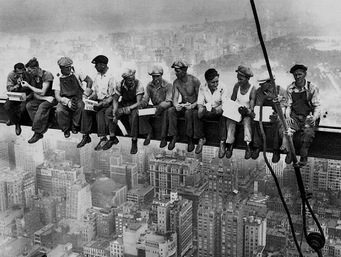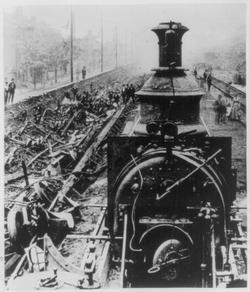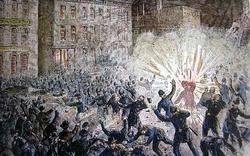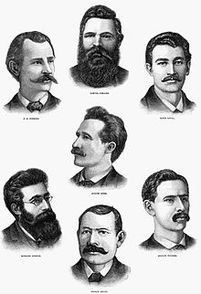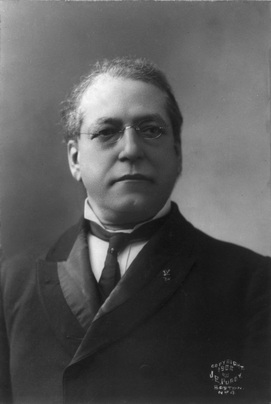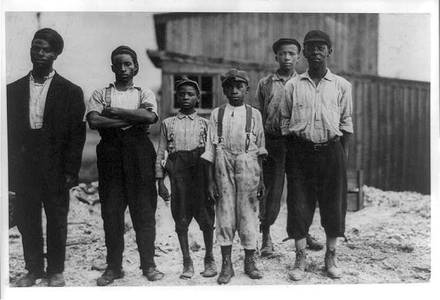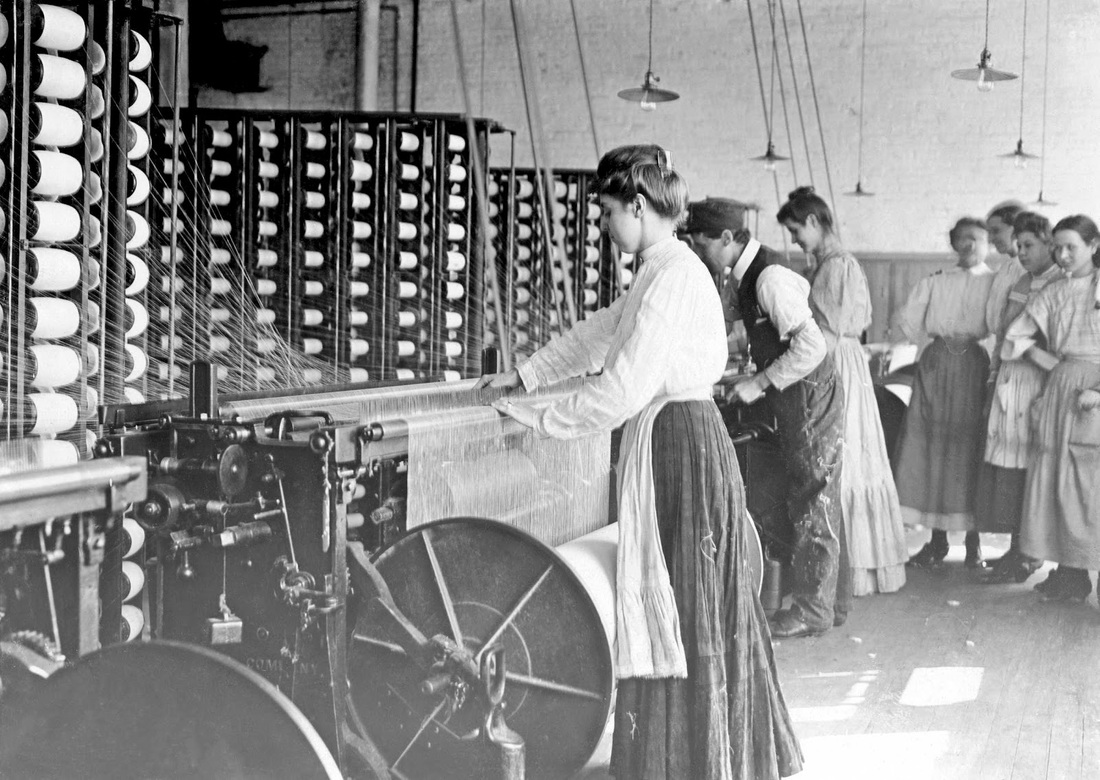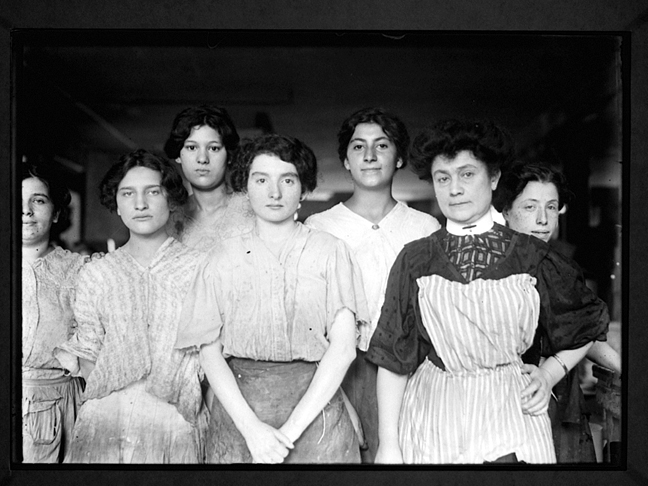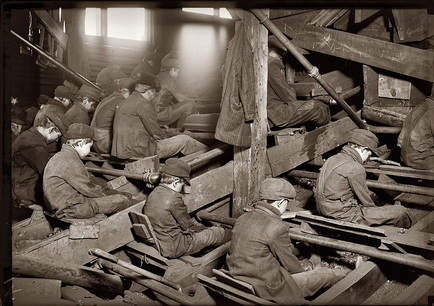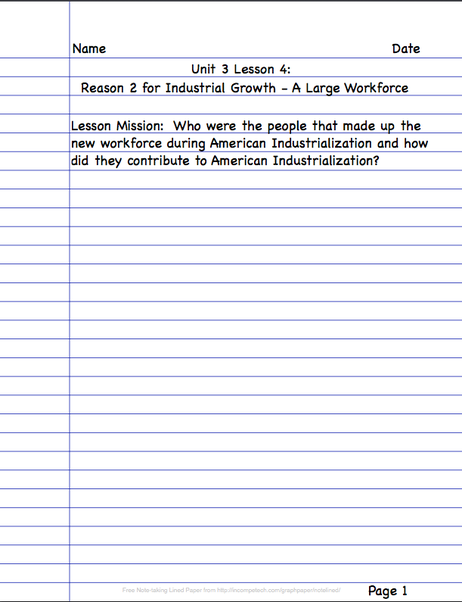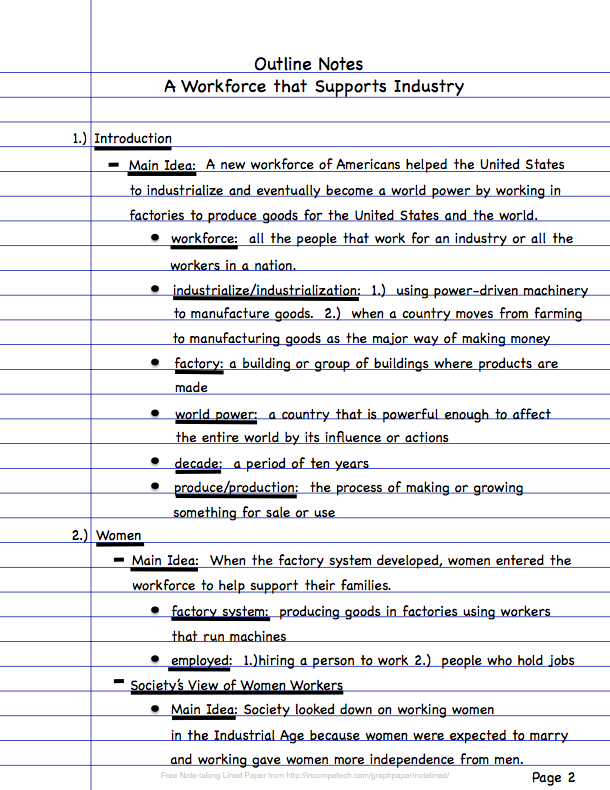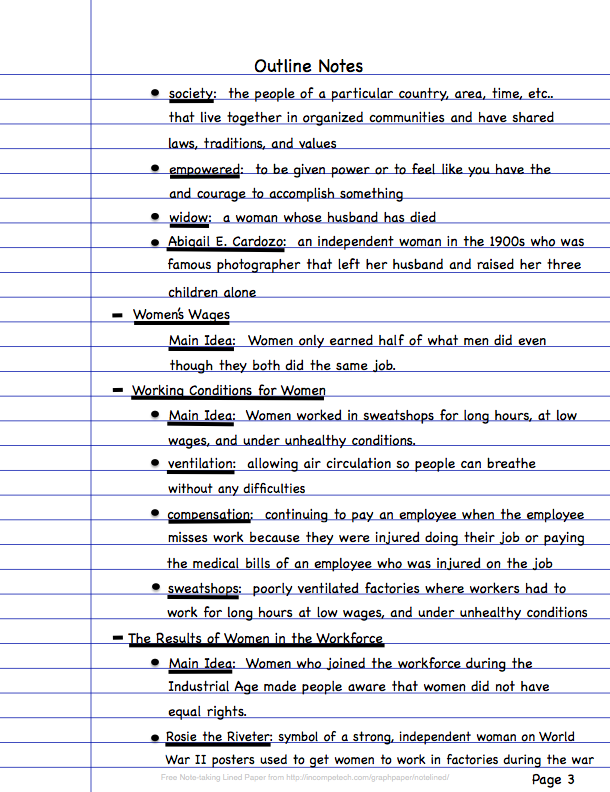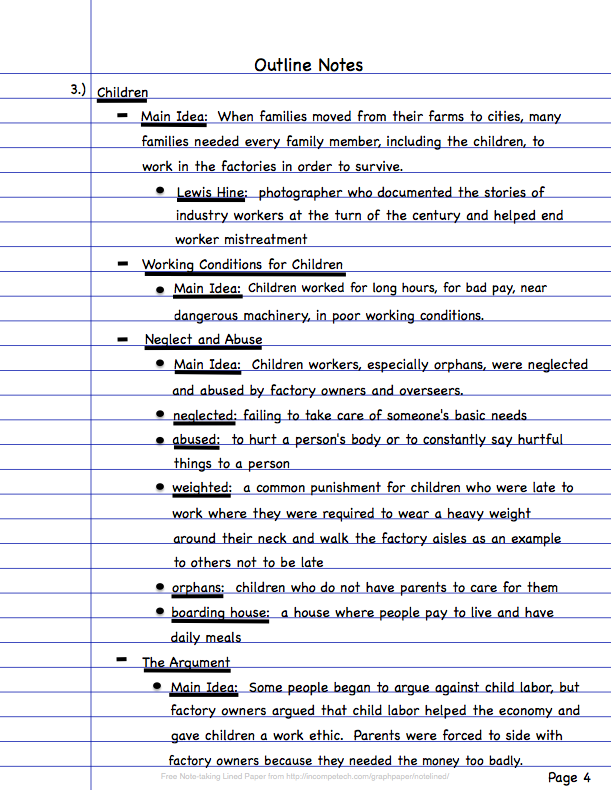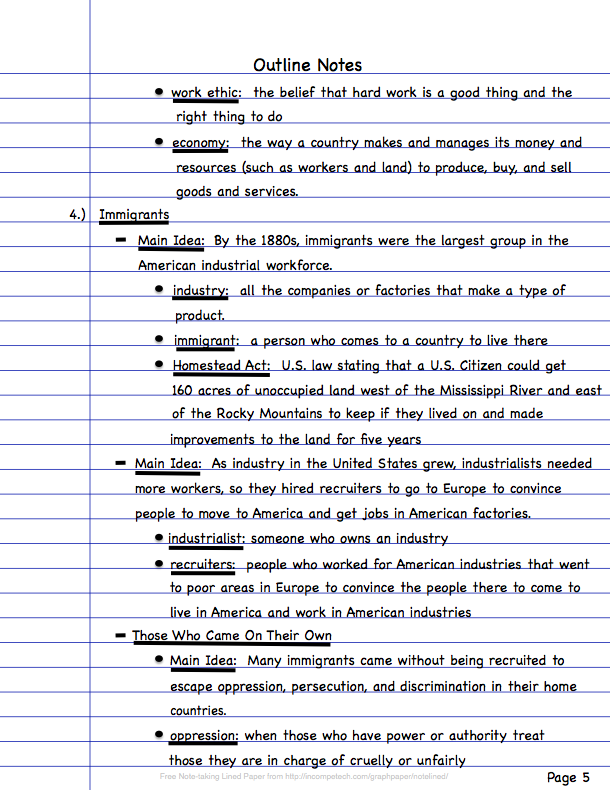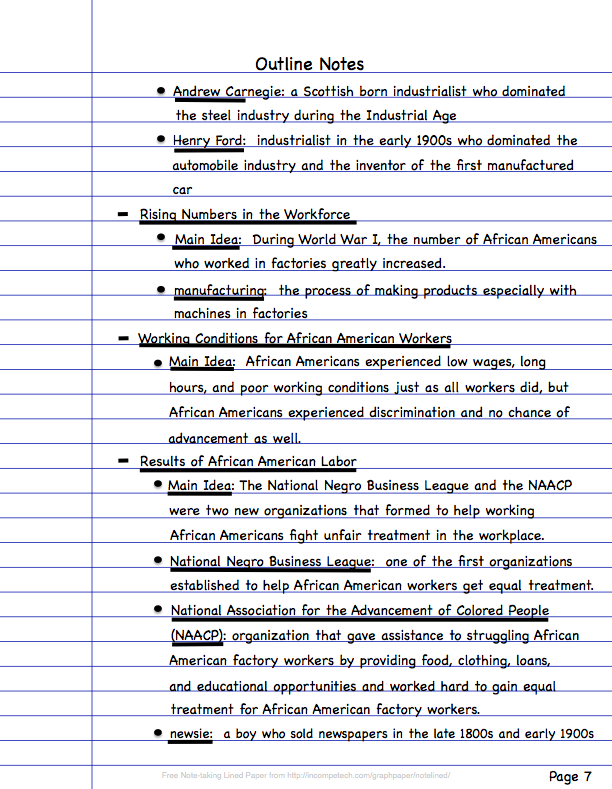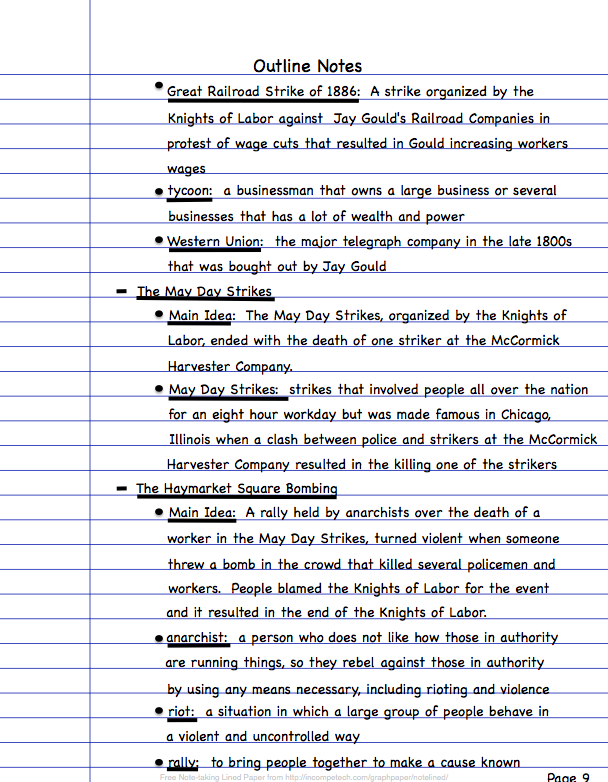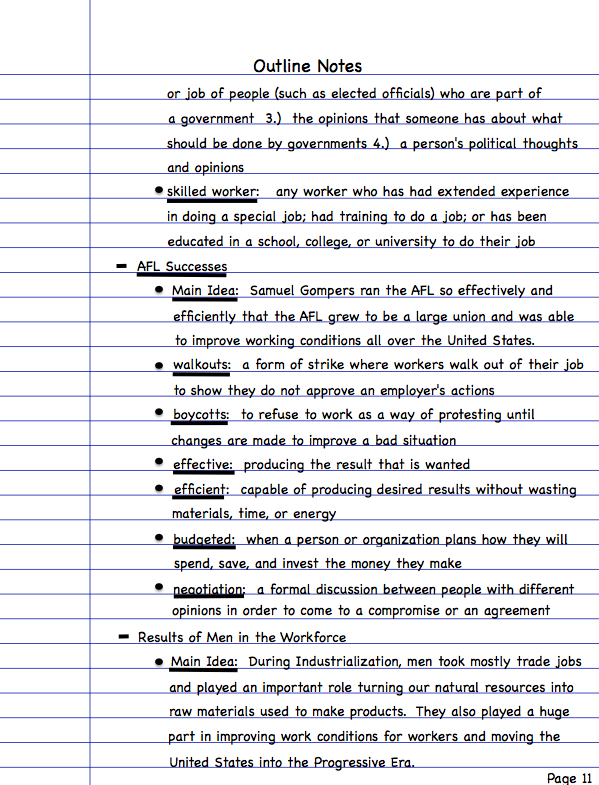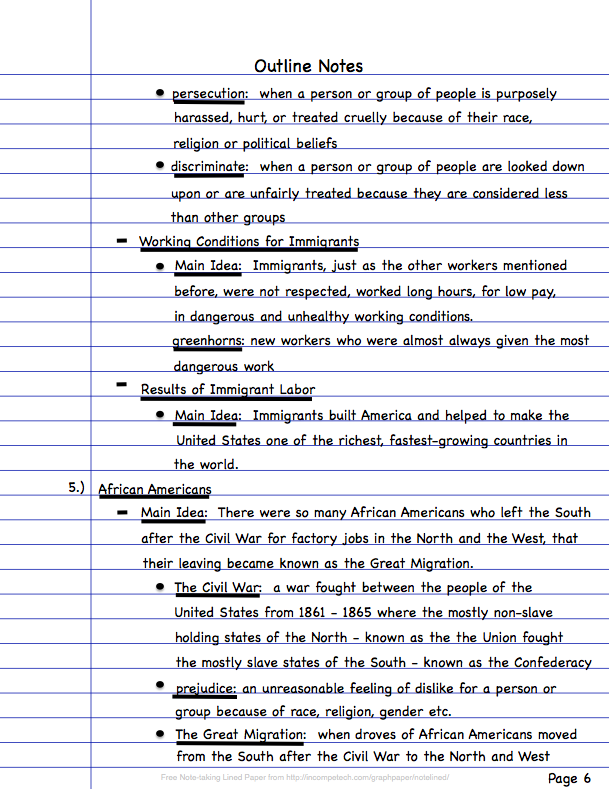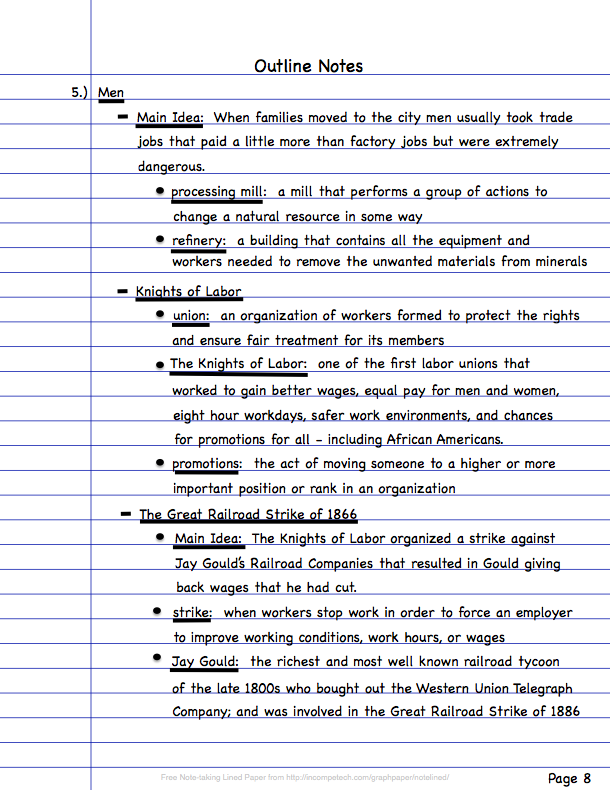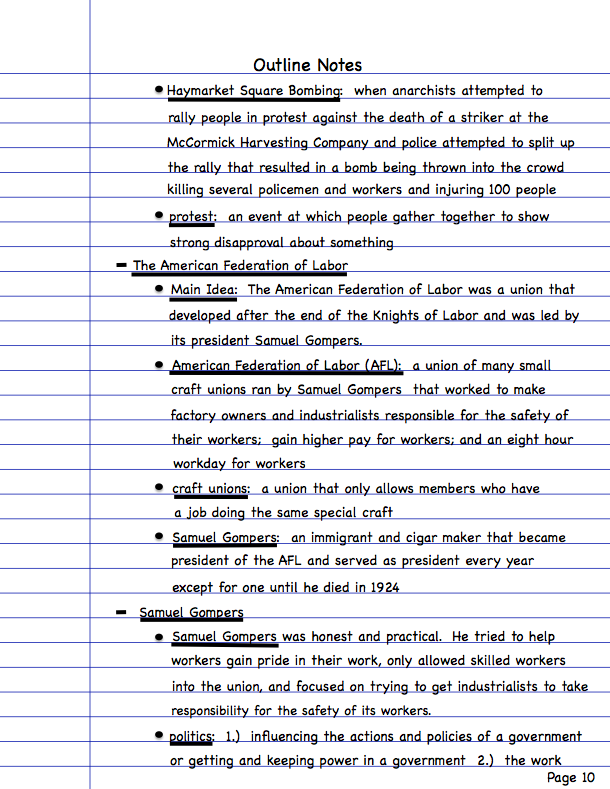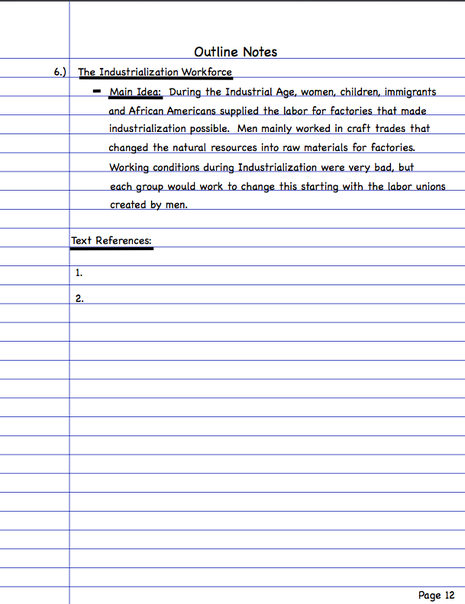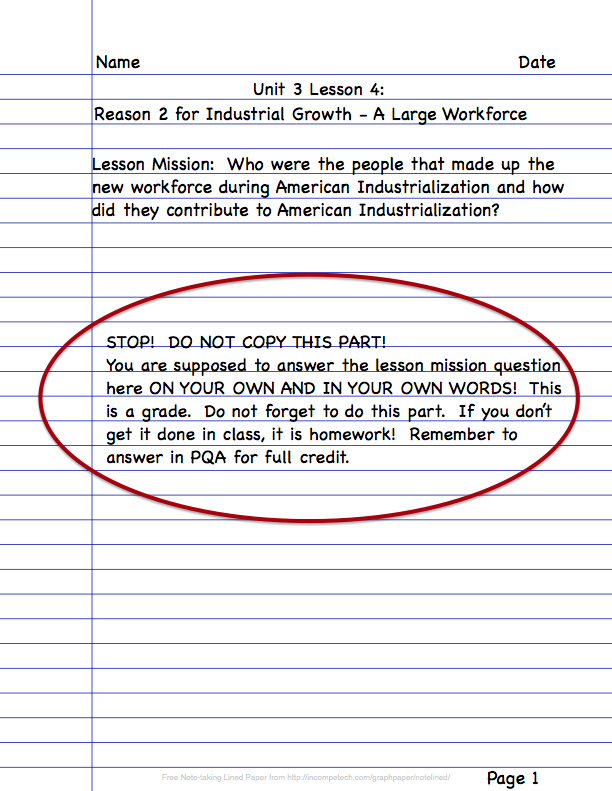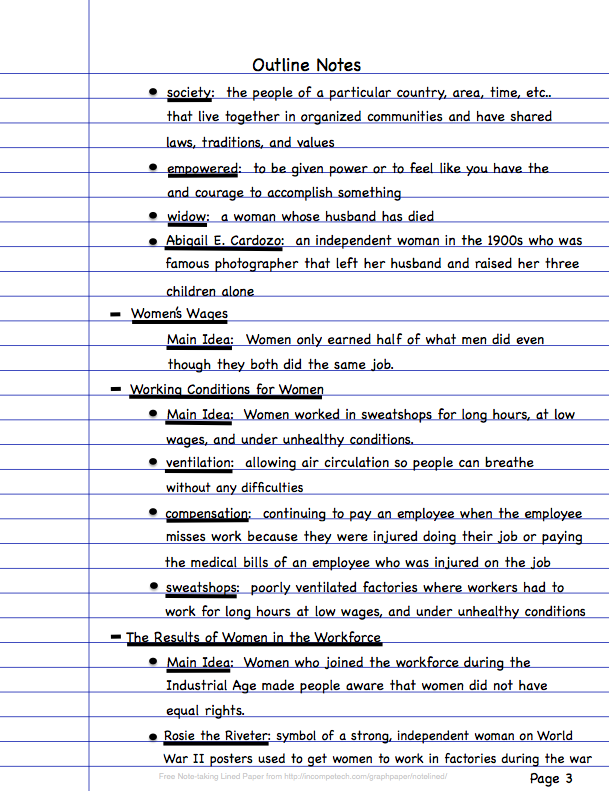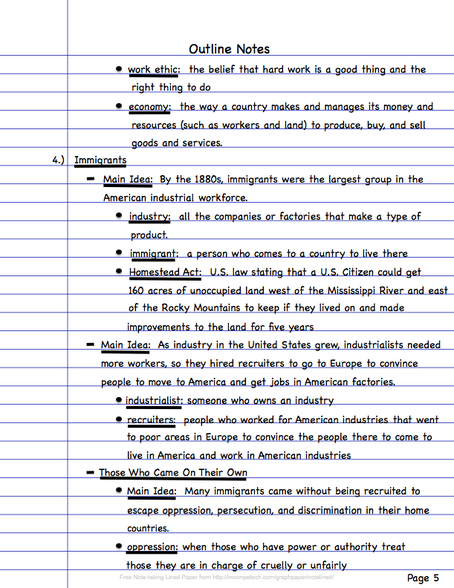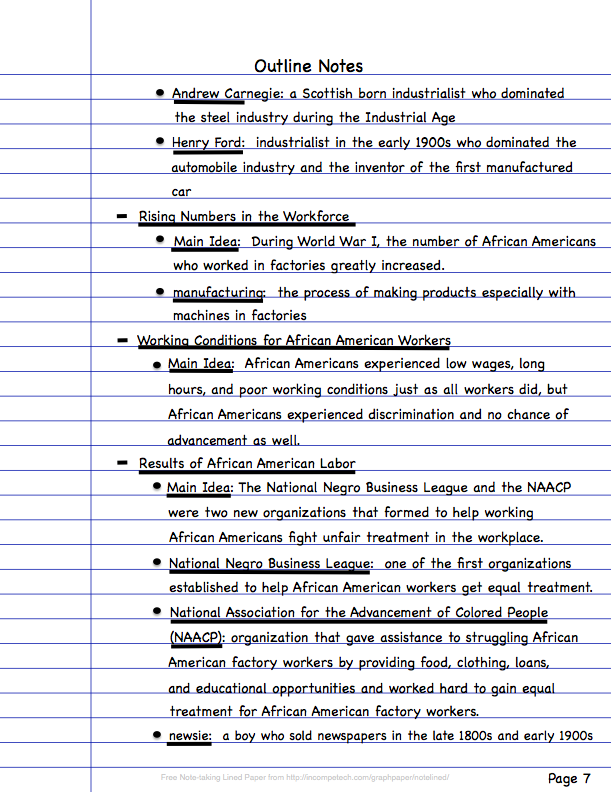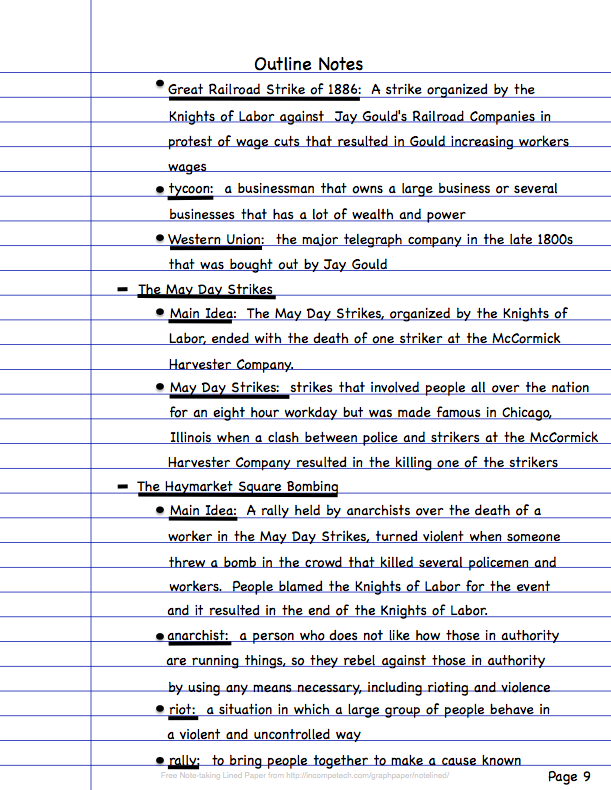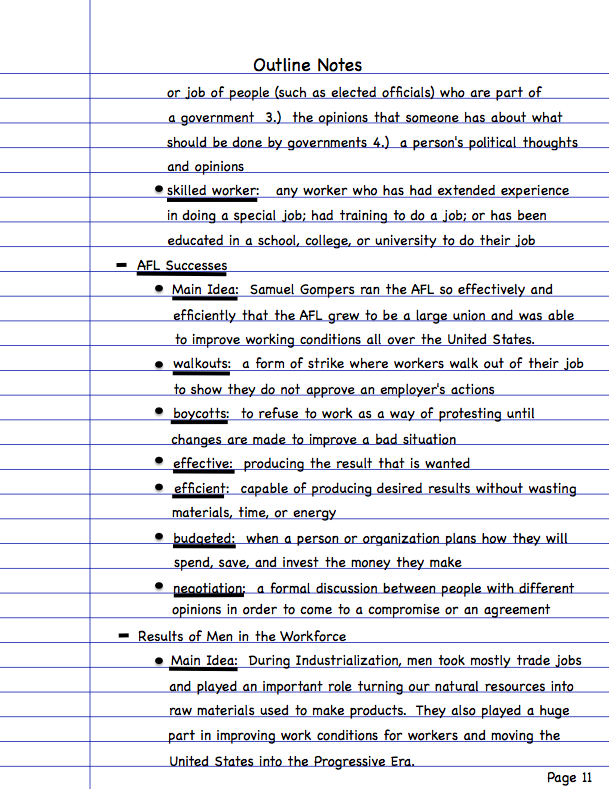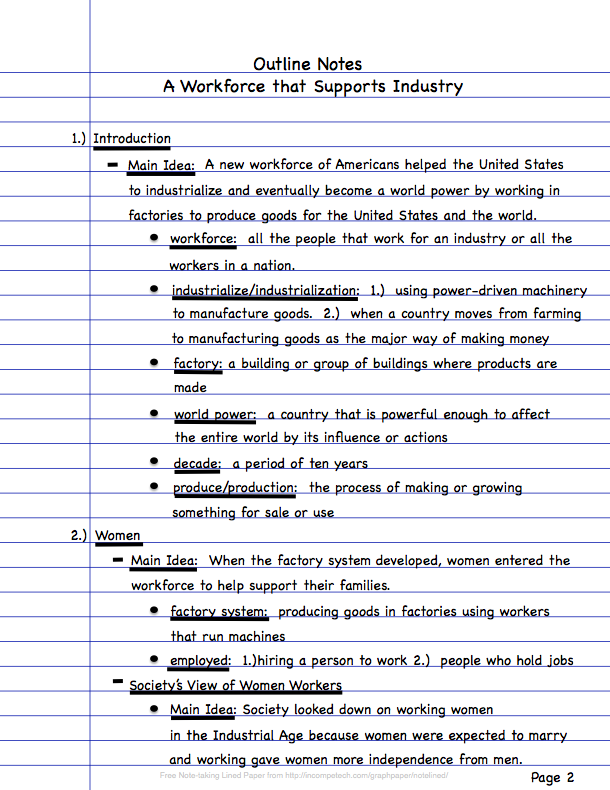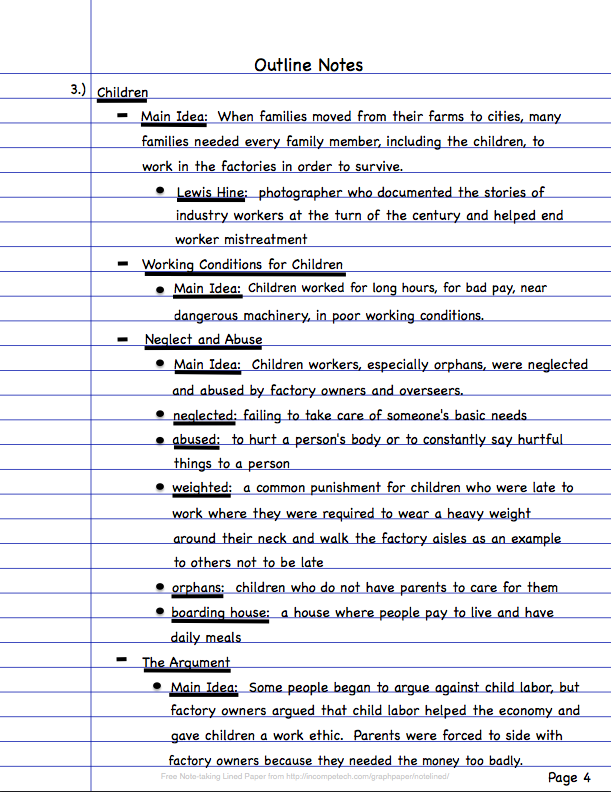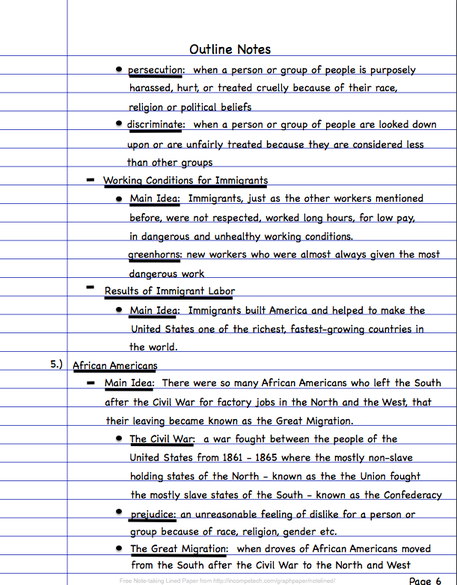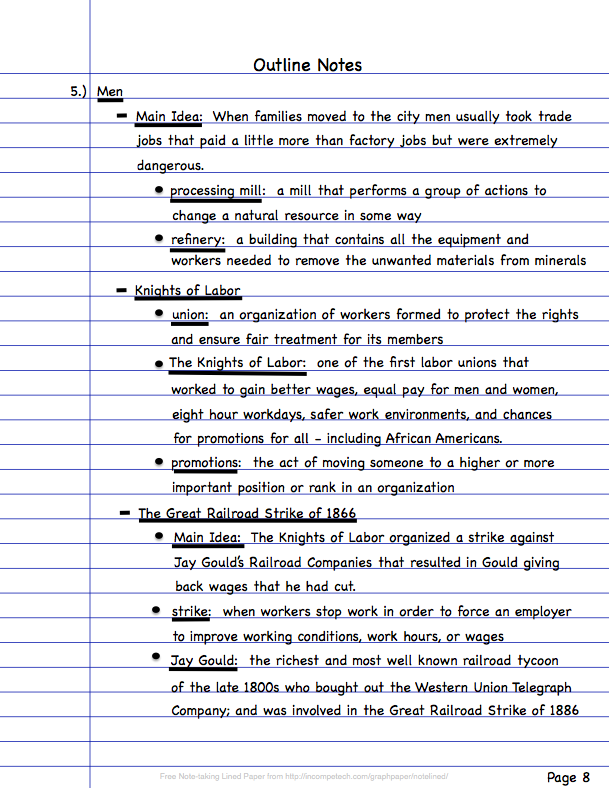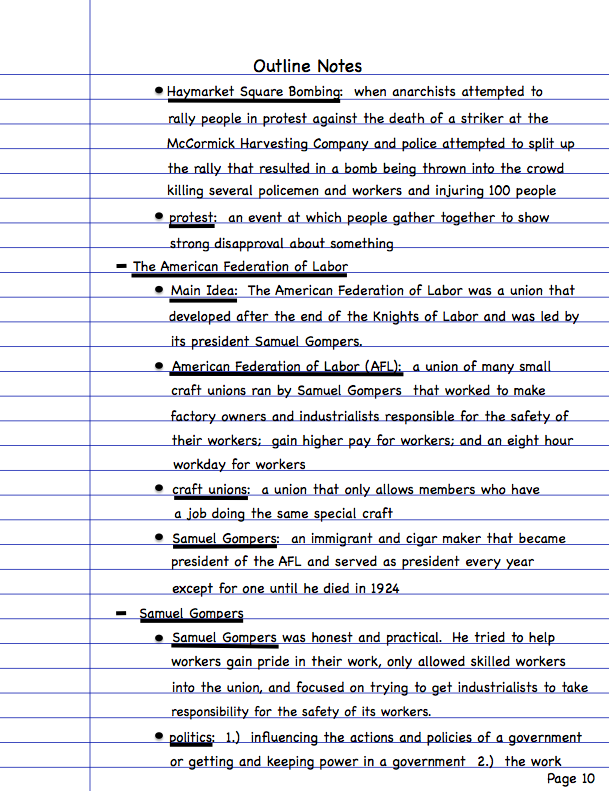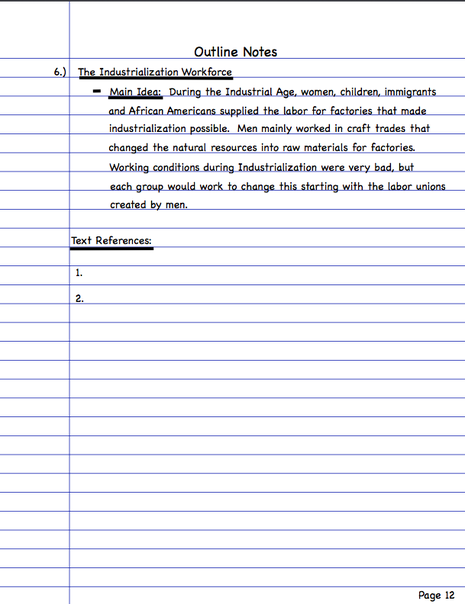Unit 3: The Industrialization Age
Topic 1: Industrialization
Topic 1: Industrialization
LESSON 4
~ REASON 2 FOR INDUSTRIAL GROWTH ~
A LARGE WORKFORCE
FOCUS ACTIVITY
Lesson Mission

DIRECTIONS: Remember, the Lesson Mission is what you, the student, will be able to do after the lesson is over. Begin today's Lesson Chronicles Entry by heading your paper with your name and the date and the Lesson Title. Write down today's essential question. Answering the essential question at the end of the lesson is your Lesson Mission!
Essential Question(s):
Who were the people that made up the new workforce during American Industrialization and how did they contribute to American Industrialization?
Who were the people that made up the new workforce during American Industrialization and how did they contribute to American Industrialization?
Set up your Lesson Chronicles for today like the example below.
TEACHER ACTIVITY
Pre - Reading & Taking Notes with Outlines

DIRECTIONS: Remember, accomplishing your lesson mission is your purpose for reading. To accomplish your mission, you must be able to answer the essential question(s). We will continue to work on answering essential questions by identifying information from key text structures but you are going to try a new note-taking method. It is called an outline.
You start off the same way. First, you recall the Key Text Structures in Non-Fiction Test.
You start off the same way. First, you recall the Key Text Structures in Non-Fiction Test.
Recall the Key Text Structures in Non-Fiction Text:
1. Headers
2. Sub-headers
3. Bolded Words
4. Italicized Words
5. Pictures & Captions
6. Boxed off Information
7. Charts and Graphs
8. Maps
1. Headers
2. Sub-headers
3. Bolded Words
4. Italicized Words
5. Pictures & Captions
6. Boxed off Information
7. Charts and Graphs
8. Maps
Outlining Non-Fiction Text Note-Taking Method
You will still write down headers, main ideas, and bolded words. Instead of using the graphic organizer method and writing the information across the page - like with your Cornell Notes, you will now write notes using a hierarchy method down the page. A hierarchy is a system in which information is placed in a series of levels according to their importance. There are many different outlining methods. You are going to start with the most simple type.
When outlining, you will take notes as you read. You will form a hierarchy by using the headers as the mini-title of each section. You will then indent. Write a dash and write the main idea. Finally, you will indent again and create a bullet for all of the bolded words with definitions, or other important details.
For example:
You will still write down headers, main ideas, and bolded words. Instead of using the graphic organizer method and writing the information across the page - like with your Cornell Notes, you will now write notes using a hierarchy method down the page. A hierarchy is a system in which information is placed in a series of levels according to their importance. There are many different outlining methods. You are going to start with the most simple type.
When outlining, you will take notes as you read. You will form a hierarchy by using the headers as the mini-title of each section. You will then indent. Write a dash and write the main idea. Finally, you will indent again and create a bullet for all of the bolded words with definitions, or other important details.
For example:
WHOLE GROUP ACTIVITY
Guided Reading

DIRECTIONS: Now that you have a purpose for reading, and you have identified the key elements of the reading, we will take turns reading the passage below as a class.
As you read, if a certain part of the reading makes you think of a text to text, text to self, or text to world connection, write it either in the side margin next to the notes in which you made the connection or at the bottom of your outline. Remember, text connections can also be questions you have about the reading.
Recall the text to text, text to self, and text to world strategy:
As you read, if a certain part of the reading makes you think of a text to text, text to self, or text to world connection, write it either in the side margin next to the notes in which you made the connection or at the bottom of your outline. Remember, text connections can also be questions you have about the reading.
Recall the text to text, text to self, and text to world strategy:
- Text to text references: When a certain word, phrase, or sentence reminds you of something else that you have read.
- Text to self references: When a certain word, phrase, or sentence reminds you of something about your own life.
- Text to world references: When a certain word, phrase, or sentence reminds you of a world issue or event.
~ A WORKFORCE THAT SUPPORTS INDUSTRY ~
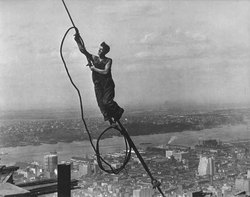 Lewis Hine photo of a man working on the Empire State Building. Lewis Hine photo of a man working on the Empire State Building.
As more and more families were forced to leave farming, men too began to get jobs in industry work. Most men, however, chose trade jobs or industrial jobs that were outdoors. These jobs required, hard, manual labor. They worked in mines, for logging companies, railroad companies, on commercial fishing boats, and in processing mills and refineries. These jobs were highly dangerous. Though they were paid a little more than factory workers, wages were very low and the chances of injury or even death were very high.
The Knights of Labor |
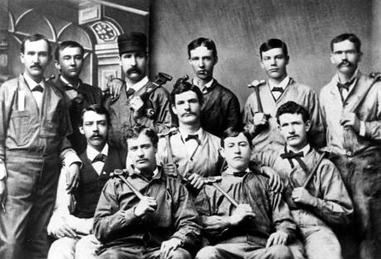 Some members of the Knights of Labor
Some members of the Knights of Labor
Worker safety was not a concern during industrialization. Many men died doing their jobs. Eventually, men began forming unions and protested the disregard for worker safety. One of the first unions was called the Knights of Labor. This union was successful mainly because they were ahead of their time in the way that they did things. They welcomed skilled and unskilled workers, women, immigrants, and also African Americans. The Knights of Labor worked to gain better wages, equal pay for men and women, eight hour workdays, safer work environments, and chances for promotions for all - including African Americans.
THE GREAT RAILROAD STRIKE OF 1866
|
In 1886, the Knights of Labor organized a very successful strike against Jay Gould's Railroads. The strike became known as the Great Railroad Strike of 1886 because it caused a series of worker strikes against other railroad companies. The Knights of Labor were angry with Jay Gould. Jay Gould was the richest and most well known railroad tycoon of the late 1800s. He owned several railroad companies and also bought out the Western Union Telegraph Company. Gould had actually cut his workers already low wages in an attempt to make himself more money. The strike led Gould to restore worker wages. As a result, the Knights of Labor gained over 700,000 members.
THE MAY DAY STRIKES
Later that year, the Knights of Labor tried to help workers in what became known as the May Day Strikes. The strikes involved people all over the nation but the major action occurred in the city of Chicago, Illinois. In Chicago about 80,000 workers were involved in a strike for the eight-hour workday. Tension built between the strikers and the police, and during a clash at McCormick Harvester Company one striker was killed.
THE HAYMARKET SQUARE BOMBING
During this time, there was a group of anarchists in Chicago. An anarchist is a person who does not like how those in authority are running things, so they rebel against those in authority by using any means necessary, including rioting and violence.
|
|
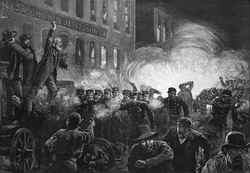 This engraving was done in 1886 of the Haymarket Square Bombing.
This engraving was done in 1886 of the Haymarket Square Bombing.
These anarchists felt this was an excellent opportunity to hold a rally to try to gain support for more violent strikes against industries. On May 4, 1886, the day after the McCormick Strike, anarchists gathered at Haymarket Square to protest the death of the employee who was killed. When the police came to break up the meeting, a bomb was thrown into the crowd. Several policemen and workers were killed. About 100 people were hurt.
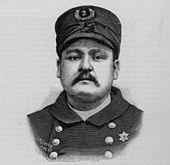 Police officer Mathias J. Degan was killed by the bomb blast. Police officer Mathias J. Degan was killed by the bomb blast.
Some of the anarchists were arrested for throwing the bomb, but there was no proof that the anarchists were the ones who did it. One of the anarchists that was arrested was a member of the Knights of Labor. This caused people to stop supporting the Knights of Labor even though the group had nothing to do with the riot. Shortly after this incident, the Knights of Labor started to fall apart. People blamed them for the deaths and injuries of the Haymarket Square Bombing. By 1893, the Knights of Labor no longer existed.
The American Federation of Labor |
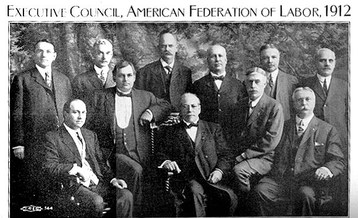
Another labor movement group organized and started gaining strength after the Knights of Labor ended called the American Federation of Labor (AFL). The AFL was a union that brought together many small craft unions into one large union. This gave the smaller craft unions more money and support to fight against the rich industrialists. Samuel Gompers, an immigrant and cigar maker became president of the AFL and served as president every year except for one until he died in 1924.
|
SAMUEL GOMPERS
Samuel Gompers was a peaceful man. He did not become involved in politics or make promises that he could not keep. He understood that without an education, factory workers would remain factory workers for most of their lives. So, instead of promising promotions and advancement, he tried to give members a sense of pride in the skills and jobs that workers already had. Gompers only allowed skilled workers into the union. Skilled workers were people who had experience or education in making a specific type of product. The AFL worked to make factory owners and industrialists responsible for the safety of its workers. They also tried to gain higher pay and an eight hour workday for workers.
AFL SUCCESSES
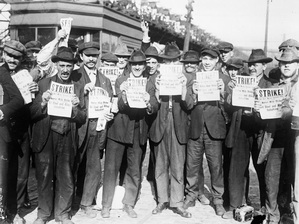 U.S. Steel Strike of 1919 organized by the AFL U.S. Steel Strike of 1919 organized by the AFL
The AFL attempted to meet their goals by staging walkouts and boycotts. They organized meetings with factory owners and tried to work out fair deals for workers and owners. By 1900, many unions had joined the AFL and their were around 500,000 members. Gompers worked hard to organize the AFL to be effective and efficient. He budgeted the union funds well, had realistic goals, and good negotiation skills. By 1920, the AFL had four million members and conditions in the work place began to improve.
|
Results of Men in the Workforce
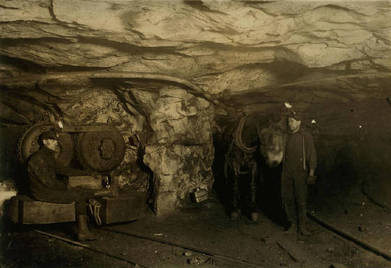 A Lewis HIne photograph of a coal miner in Pittston, Pennsylvania
A Lewis HIne photograph of a coal miner in Pittston, Pennsylvania
Most American men worked hard in trade professions once the United States began industrializing and moving away from family farming. They worked as miners, carpenters, railroad builders, and loggers. They worked in food processing industries, saw mills, and refining industries. They worked to bring America the raw materials needed to produce needed goods. American men of industrialization had the strength to stand against poor work conditions. When men organized labor unions to insist upon far treatment for working people, they inspired a new age in American History called the Progressive Era. You will learn more about the Progressive Era soon.
THE INDUSTRIALIZATION WORKFORCE
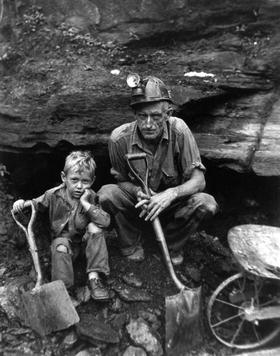 A photograph of a Appalachian coal miner named Teach Sloan with his son. A photograph of a Appalachian coal miner named Teach Sloan with his son.
American industrialization grew and expanded because of American workers. Women and children worked very hard and endured incredible hardships to give industrialization its start. Immigrants and African Americans fueled industrialization and helped it to grow by working day and night and taking jobs that were less than desirable to make sure factories produced the goods that Americans wanted. Finally men, were the engine that ran industrialization. They worked to give Americans the raw materials needed for industry but also worked to make sure that American workers were seen as the reason American industrialization was successful.
|
Outline Notes From the Reading
SMALL GROUP ACTIVITY
Live Action Role Play

In this activity, your group will be given a script to practice and perform for the class. Each group will feature the story of one of the new groups of workers in the Industrialization Workforce. I will pass out your scripts and you will have until the end of class to practice them. You will perform your skit in class tomorrow. You will be able to use your script when you perform. You may also bring in costumes and props if you like to enhance your performance. You must stay on task during this activity!
I will video your performances and embed them at the bottom of this lesson and on the Kids at Work Page so that you may see all the performances from each class.
I will video your performances and embed them at the bottom of this lesson and on the Kids at Work Page so that you may see all the performances from each class.
INDIVIDUAL ACTIVITY
Answering the Essential Question

A Lesson Chronicles Activity is an individual activity where you prove that you accomplished the lesson mission. Lesson Chronicles require you to keep a notebook or journal with a table of contents. Each entry should be dated. First, you write the lesson mission. Then you prove you "can do" whatever the mission says by answering the essential question of the lesson in PQA format. Remember PQA format means "Put the Question in the Answer".
DIRECTIONS: Work by yourself to prove you have completed today's mission successfully by answering the essential question for today. Answer the question on the first page of your Lesson Chronicles under your Lesson Mission. Refer to the example below.
The example shows you what all you are expected to have for your portfolio check on this lesson.
HOMEWORK
Finish the Lesson and Family Time

Remember, you have homework every night in Social Studies. Your homework is to show your Lesson Chronicles to your family and tell them what you learned today. Not only will this give you quality time with your family but it will help you review for your unit test. Go over your lesson chronicles entry from today everyday to help you study for the Topic Quiz and Unit Test.
If you did not complete any assignments from today, they are homework. You never know when I am going to check portfolios, so make sure you are keeping up!
If you did not complete any assignments from today, they are homework. You never know when I am going to check portfolios, so make sure you are keeping up!
END OF THE UNIT 3 LESSON 4 MODULE

Congratulations! You have Completed the Unit 3 Lesson 4 Module!
The performances will be embedded below if you would like to watch these.
The performances will be embedded below if you would like to watch these.
